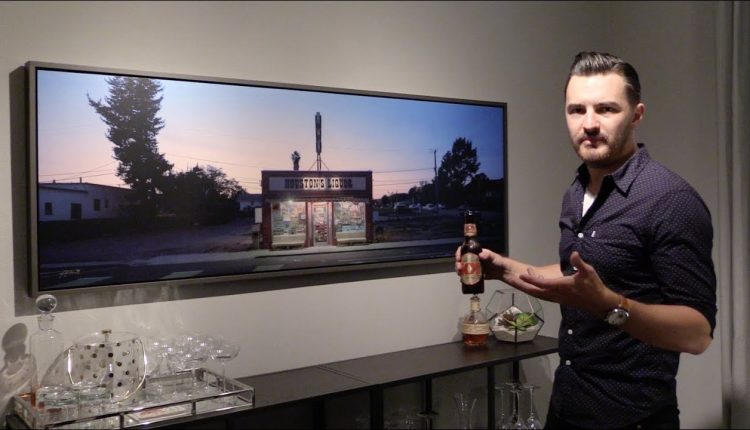Fine Art Photography: From Scan to Print to Frame
You better believe it. I’m printing that photo of Houston’s Liquor from my most recent on-location video. And I’m doing it big: 2-foot by 6-foot.
Oh, what’s that? You want to see how it’s made? I thought you’d never ask. Seriously. I thought no one would ever ask to see this. But hey, I’m doing it anyway. So I made a video showing the entire process from scan to print to frame to hanging it on the wall.
I started with a drum scan…but that didn’t work out too well. So I instead scanned the 6×17 negative (of Kodak Portra 160 film) on my Epson V750 scanner. Then I cleaned up the file and prepped it for printing before sending off to Pro Photo Connection in Irvine, CA to get a C-type wet-process print on Fujifilm Crystal Archive Pearl paper. They used a beast of a machine: a ZBE Chromira ProLab printer.
It came out so. damn. good. …if I may say so myself.
Then the print was mounted on 3/4 gator board and laminated with a luster lamination before heading off to Salamon Art in Fountain Valley, CA for framing where they wrapped it in a beautiful warm-gray float-frame.
With the print finished and hanging on the wall, it was time for me to enjoy a cold celebratory beer while I pontificate about the virtues of printing and why you should do it too. Because if I can’t pretentiously lecture to you about what you should be doing with your photography, why do this at all, you know?
But really, I hope you enjoyed watching this whole process of capturing, scanning, printing, framing and hanging this 6×17 film image on the wall. By the way, I created this photo on Kodak Portra 160 film using a Shen-Hao TFC 617-A panoramic camera. You can view the original on-location video where I created this photo here:
Printing (and film processing) by Pro Photo Connection in Irvine:
Framing by Salamon Art:
Thank you for watching, subscribing, and commenting!
Website:
Instagram:

Thank you, Nick. This is an inspiring video. And I like your personality and delivery on this channel. Shane
Great video nice
Really cool.
How much does the whole process cost? Guesstimate?
Why haven’t you got more subs. Awesome viewing
great video!!
Great job, very rewarding
Love your videos! Question! Where did you get the metal binders that store your negatives?
Hey Nick, what kind of binders do you use? I use a flatbed scanner like you and the Epson trays fit 6 35mm frames. I found storage sheets that hold 6 frames but no binders unless they are gigantic. How do you manage this?
Where do you get the ground glass that you used with the epson for the scan? Edited to say By the way that building is my dream building I've been looking for.
Great video and narrative. I like your content a lot.
It can indeed be a challenge to scan negs. I can say we don't have that saturation issue with our Aztek. Not sure what's going on there. Flatbeds are very convenient, but they just don't have the color detail/fidelity of the PMT of the drum. But no two images are alike and you gotta do what you gotta do to get a print you like! Another challenge with negs is the increase in grain that results from contrast adjustments needed to move the low contrast neg to a proper gamma for printing. Chromes really are the ideal film stock for scanning. Great video!
Dos Equis.
YOU MUST LIKE YOUR SELF !!!!!!!
How much???
Not sure if you got to keep the proof or what you did with it but if not too lqte you should frame it and give it to the shop owner
Nice i kinda want to try and do this on a buget side fram it and try to sell it on fb i wounder if people would by it if the photo is good and fram is decent
How much does a Print like that run you, approx.? Its gorgeous btw
very very good video Nick. Thanks mate.
Hi Nick, I love your videos. One thing: if you are going through all the trouble of drum scanning, etc for a digital C-print, why not simplify and use the full analog process, with enlarger? That way you get the full sharpness and continuous tone without and digital interference. Honestly it's still the best way of doing things. I haven't printed 3x6ft before, but I know it must possible because that was the only way to do it back in the day. I am experimenting in my own darkroom with large prints, and found the best was is with a horizontal-oriented enlarger. I know not many (or any) places do this anymore, but just a thought!